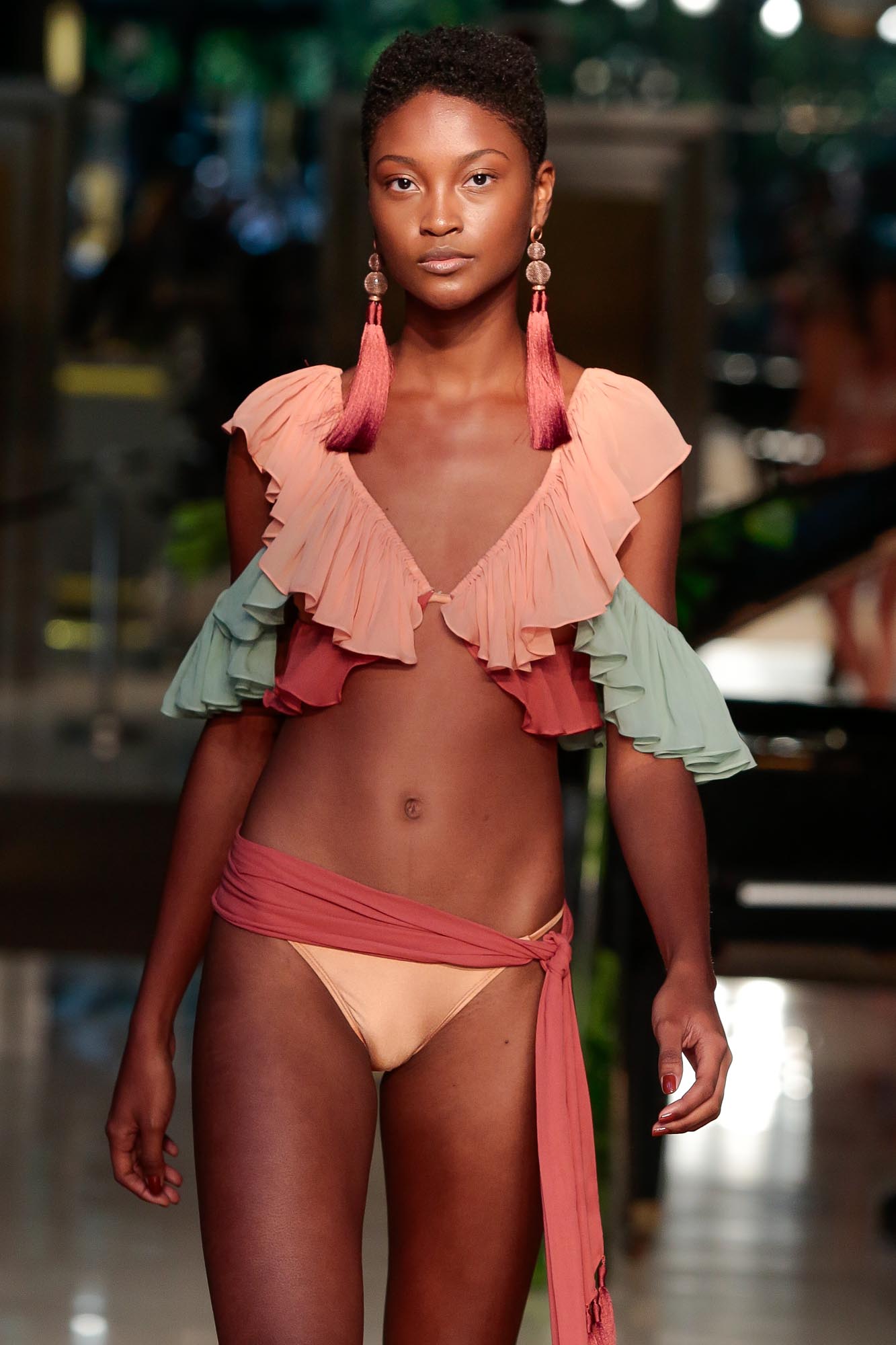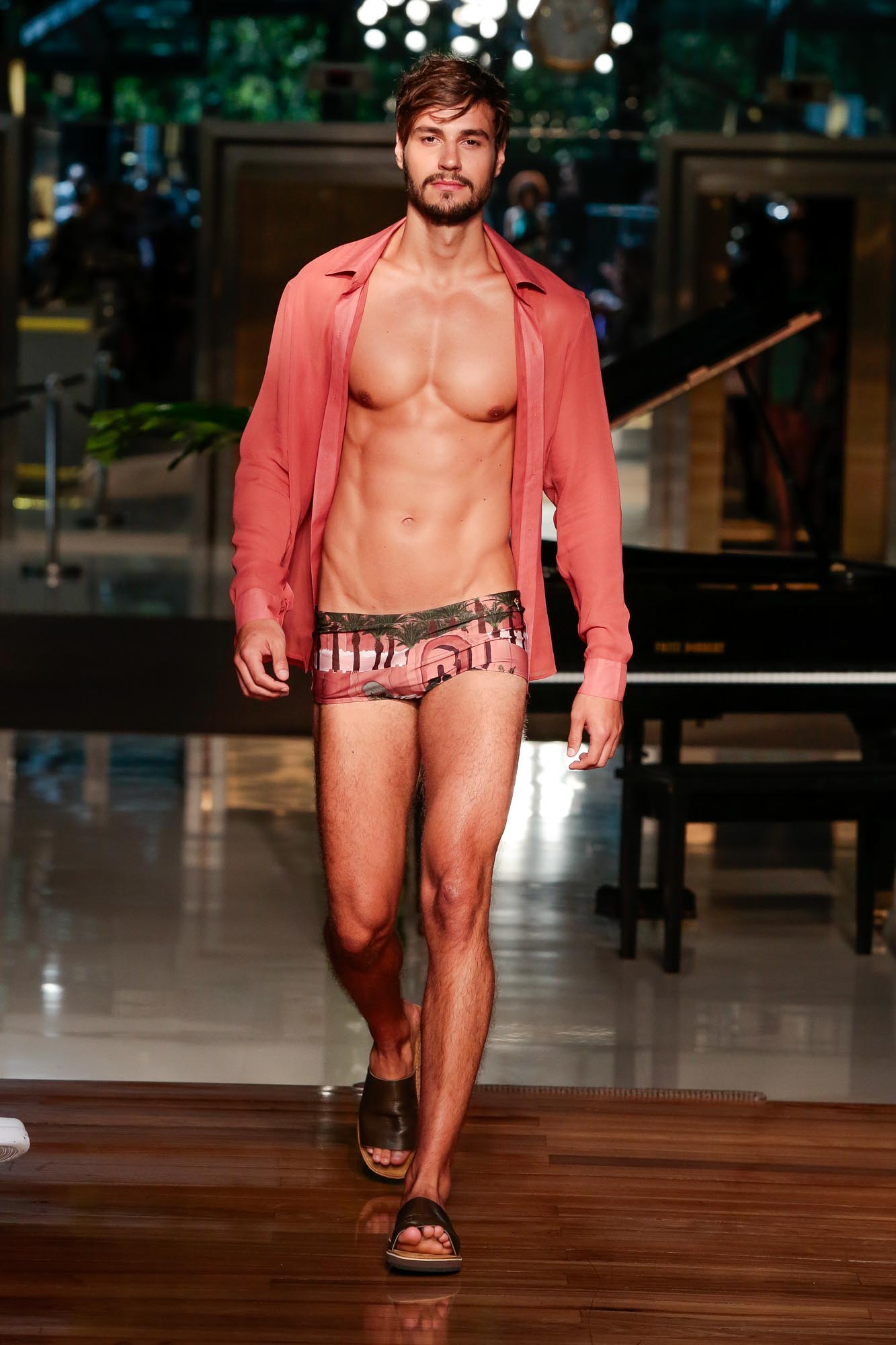São Paulo – Brazilian beachwear fashion brand Água de Coco, owned by fashion designer Liana Thomaz, based its new collection in six luxury hotels from around the world, among them Royal Mansour, in Marrakech, Morocco.
According to the press material released by the brand, Marrakech’s ancient vibe and the magnificence of the local buildings show up in the pieces, with illustrations of date palms and paintings merging the sky’s and the city’s colors.
The bikinis, swimsuits and other clothing inspired by the Moroccan hotel and that were presented at the collection’s show, at the end of July, display a lot of fringes and frills, plus appliqués representing Morocco’s traditional mosaics.
A mix of small palace with ancient medina, with sinuous passageways, courtyards and indoor gardens, Royal Mansour is in a 5 hectares area. In its press kit, the hotel says that the layout of the main building stays true to the classic Moorish architecture, but that the interior pays homage to the Moroccan artisan craftsmen.
Rather than corridors, the hotel connects its different rooms via 53 gardens, with shrubs and flowers. The landscape architect was Luis Vallejo, from Spain. He has used many olive and orange trees (in the gallery below, the creations by Água de Coco inspired in the hotel).
It was this environment that inspired Água de Coco to develop its bikinis, swimsuits, bodysuits, shorts, skirts, dresses, chemises and pants. The brand also has some beachwear complimentary pieces, such as the chemises, but most of the collection is made of bikinis and swimsuits. (continues after the photo gallery)
Besides the Moroccan hotel, other hotels that were used as inspiration for the collection were Hotel Metropole Monte Carlo, in Monaco, the Chromata Santorini, in Greece, the Tivoli Mofarrej, in São Paulo, the Santa Caterina, in Italy, and the Emiliano Hotel, in Rio de Janeiro.
The Hotel Collection show took place at the end of July, at the lobby of Tivoli Mofarrej, and had a diverse cast of models, including plus-size models and models with disabilities.
Translated by Sérgio Kakitani










